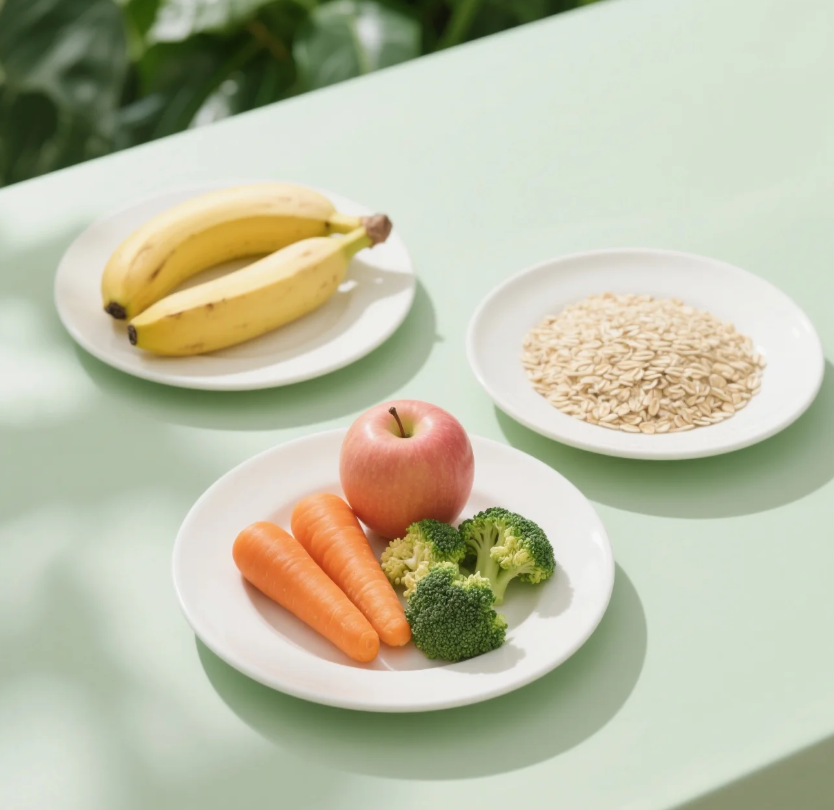The delicate rhythm of morning begins with a yawn, a swaddled baby nestled against your chest, and the gentle rhythm of breastfeeding. While soothing to both mother and child, this moment also carries a quiet truth: your body is giving more of itself than you might imagine. To keep milk flowing and energy high, your diet matters in ways that reach far beyond filling your own hunger—what you eat now directly impacts your baby’s nourishment, growth, and development.
Many new mothers wake to search for terms like breastfeeding nutrition, lactation superfoods, and boosting milk supply naturally. There are endless lists online, but for most women, it’s the real-life stories that bring nutrition to life. Take Rachel, a new mom in Denver, who found her energy was plummeting by midday. She felt foggy, her milk supply slowed, and afternoon feeds became difficult. Through consultation with a lactation consultant, she was introduced to oats—and not just any oats, but overnight steel‑cut oats soaked in almond milk with chia and berries. Within days, she felt stronger during cluster feeding sessions and even slept a bit more deeply between feedings.
Oats are often heralded as a breastfeeding staple—rich in fiber, iron, and complex carbohydrates that sustain energy. But pairing them with chia seeds, packed with plant-based omega‑3s, and fresh berries boosts both antioxidant levels and milk quality. For many mothers, combining nutrient-dense superfoods into daily meals means feeding both mom and baby from the same wholesome bowl.
Another powerhouse often overlooked in postpartum nutrition is salmon. Rich in DHA—a long-chain omega‑3 fatty acid—salmon supports brain development in infants. Emma, a mom from Boston, began rotating wild‑caught salmon bowls twice a week after reading about the benefits of omega‑3 fatty acids for infants. She noticed that her baby seemed more alert and soothed during nursing sessions. “I felt like I wasn’t just eating for me,” she shares. “I was providing exactly what my baby needed on a cellular level.” Searching for omega‑3-rich foods for breastfeeding moms often leads to canned options, but she chose salmon not just for nutrient value but also for variety and flavor.
Leafy greens steal the show in so many professional lists—like kale, spinach, and Swiss chard. Packed with vitamin A, calcium, iron, folate, and phytonutrients, they support both energy and immunity. But Greta, who lives in rural Vermont and found supermarket salad kits lacking freshness, encouraged her father to start a kitchen garden. By summer, she blended garden-fresh kale into smoothies, added spinach to omelets, and topped pesto onto pasta—each dish a vivid reminder that feeding yourself well means feeding your baby more than nutrients, but a relationship with fresh, honest food. In just a few weeks, she noticed fewer daytime naps spent fogged by fatigue.

Protein is another essential pillar in breastfeeding nutrition. Lean sources like chicken, turkey, eggs, and Greek yogurt support tissue repair and milk production. For example, Janelle, a nurse and new mom in Atlanta, could barely finish a hospital shift without feeling drained. She started meal-prepping Greek yogurt bowls layered with granola, nuts, and seasonal fruit. That midday mix of protein and fruit fueled her through shifts, and the healthy fats from walnuts kept her feeling satisfied. Not only did it support her workday, but she soon noticed steadier milk supply during every feed.
Beans and legumes deserve their place at the table as well. Rich in plant-based protein, fiber, iron, and folate, they also carry prebiotics that support gut health for both mother and baby. Maria, from Los Angeles, embraced Mexican-style lentil soup while nursing. She found her digestion improved, her milk supply remained strong, and mealtime prep became simpler since lentils cooked in one pot. Feeding two toddlers at once, she appreciated that the soup was crowd-pleasing and nutritious without demanding extra effort.
Whole grains like quinoa and brown rice offer enduring energy and complex carbohydrates. They stabilize blood sugar and help mothers avoid energy crashes. In Seattle, Heather found herself exhausted by evening. Regular inclusion of quinoa in her meals—like quinoa bowls loaded with roasted veggies and grilled tofu—helped her stay active for evening walks with her baby. She also appreciated the iron in quinoa, which was especially helpful after delivery, when iron levels are often low. Searching for recipes with keywords like postnatal diet iron-rich meals frequently led her to quinoa salad bowls and stir-fries that became trusted additions to her weekly meals.
Colorful vegetables and fruits bring much more than vitamins. They contribute antioxidants, hydration, and fiber—key nutrients supporting postpartum recovery and breast milk quality. One Portland mom, Alicia, discovered this while on maternity leave. Feeling wiped out after nights on end of feeding, she started incorporating zucchini spirals and roasted beets into her meals simply because the colors and flavors helped her reconnect to mealtime joy. She found herself more present during nursing sessions and even laughed more readily at her baby’s antics.
Seeds and nuts—like almonds, walnuts, flaxseeds, and pumpkin seeds—pack healthy fats and minerals such as zinc and magnesium. They provide compact, easy-to-grab nutrition between nursing sessions. Plenty of breastfeeding guides highlight these as “galactagogues,” foods believed to support milk supply. For Olivia in Toronto, keeping little bags of mixed nuts nearby allowed her to nurse and snack simultaneously. She remembers a night when she nursed through two growth spurt sessions without feeling famished, crediting those pockets of nutrient-dense snacks.
Hydration is often the silent hero behind breast milk production. Some studies suggest that drinking water during breastfeeding directly supports supply, as breast milk is mostly water. Many mothers find themselves chasing hydration throughout the day. Sophia, in San Diego, filled a large glass bottle with slices of lemon, cucumber, and mint every morning. Between feeds, each sip reminded her that self-care—in the simplest form—can enhance milk quality and mood. Her online searches for breastfeeding hydration tips often led to recommendations for herbal teas—but she preferred the natural refreshment and flavor of her infused water.
Dairy or fortified alternatives can supply calcium, vitamin D, and protein. While not mandatory, for moms who tolerate dairy, a cup of Greek yogurt or a glass of milk can be comforting and nourishing. Paula, a sleep-deprived mom in Miami, found yogurt smoothies to be simple yet effective—blended with fruit, spinach, and a scoop of protein powder, they sustained her through late-night breastfeeding sessions as well as early workouts.
Occasionally, nutrient supplementation becomes necessary when whole foods cannot meet all the needs. Many lactation professionals recommend a postnatal vitamin containing vitamin D, iodine, choline, B12, and folate. However, relying solely on supplements isn’t enough. Tessa, in London, realized her vitamin D level was low when her baby was around three months old. After adding a supplement, combined with fortified milk and time in the sun, her mood brightened and seasonal sniffles eased. Her pediatrician assured her that timely supplementation complements—but doesn’t replace—a nutrient-rich diet.
Occasionally, dietary adjustments may be needed when babies show sensitivity—like fussiness or gassiness. For instance, Susan in Melbourne found her baby reacted after she ate cruciferous vegetables. By temporarily removing broccoli and cauliflower and reintroducing them slowly, she managed both her milk quality and her own desire for healthy meals. She discovered alternatives like zucchini and carrots that she tolerated without issue.
Parenting beyond nutrition includes the emotional nourishment of mealtime. It isn’t just about tracking calories or milk supply—it’s the ritual of breaking bread, of cozy breakfasts shared with a sleepy infant, of soups simmered when baby naps nearby. It’s the human warmth that accompanies every nourishing meal, wrapped in soft nursery blankets or shared in scattered crumbs on the kitchen floor. When Rachel’s steel‑cut oats bowl ended with her baby grabbing a spoon and taking a messy bite, it felt like trust. When Emma angled plates within her nursing reach as she sat with a spoon in hand, nursing in tandem with breakfast, it felt like connection.
All of these meals, snacks, and hydration reminders aren’t just about best breastfeeding foods or high milk supply smoothies. They’re about reconstructing daily life around nourishment that honors your body and your baby’s needs. Each recipe, each bite held in one hand while the other soothes a swaddled infant, threads together self-care and caregiving.
Throughout those early months—laden with nights that stretch long and days filled with quiet wonder—the right food fuels more than the body. It fuels patience to respond to the first giggle, clarity for navigating unexpected challenges, rest when there’s a lull, and joy in the small victory of a baby’s sleepy gaze after a full, content feed.
Across urban kitchens, family tables, and occasional hospital rooms, mothers find a welcome truth: eating meals rich in whole grains, lean protein, colorful veggies, healthy fats, and plenty of hydration isn’t just about supporting breastfeeding. It’s about sustaining presence during the tender and testing chapters of early motherhood—one nourishing bite at a time.




